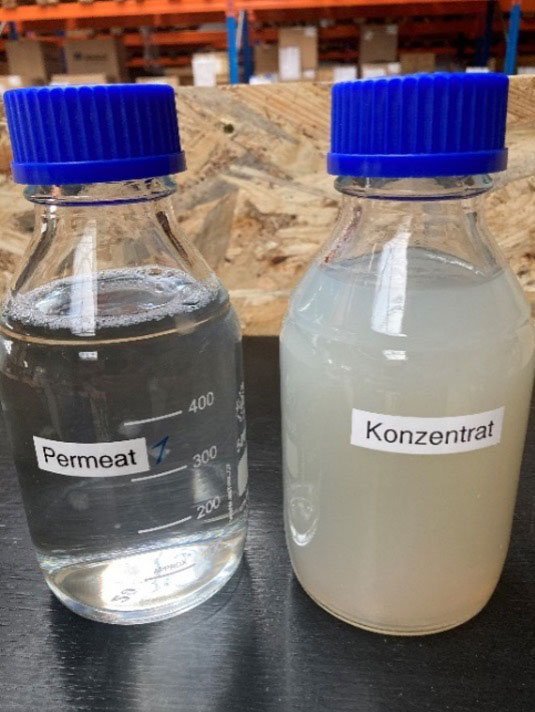Bilge water treatment with ceramic membranes
Bilge wastewater treatment on ships by filtration with ceramic membranes: enormous potential for savings
Filtration of bilge water on ships with ceramic membranes: reduction of wastewater volume, cost reduction, generation of filtrate suitable for discharge into the sea, compliance with discharge requirements.
Key technology for the treatment of emulsions
One of the most important environmental problems on ships is the uncontrolled overboard discharge of liquid waste. Among other things, oily wastewater (bilge water) accumulates in the lowest points of ships, called bilges. Above all such large quantities accumulate on larger, older ships, which are too large for long-term storage.
Bilge water is a highly variable mixture of potable water and seawater with impurities from various sources such as fuels, oils and hydraulic fluids, cleaning agents, etc.
atech membranes meet the high requirements
The use of ultrafiltration plants at the Royal NL Navy and many other ship owners in the Netherlands Norway, UK and Germany from PROMAC with ceramic membranes from atech finally ensures that the specifications for the discharge of the permeate are met.
Onboard test and operational results confirm that any bilgewater mixture, even under emulsified conditions, is typically treated to a residual oil content of 2-5 ppm, but always below 15 ppm. Due to maximum volume reduction, the concentrated oily residual usually contains less than 2 -5% water (or 95-98% oil). The entire UF system line is IMO MEPC 60/33 certified and specifically designed for emulsified mixtures. The systems have been selected for advanced new construction and extensive retrofit programs.
Membranes suitable for filtration of bilge water emulsions
| Channel- diameter (mm) | Pore size | Permeate performance (l/m²h) | Temperatur | TMP | Velocity in channel |
| 3 - 4 | UF | approx. 60 - 80 (depending on pollution level) | 20 - 50 °C 140 - 176 °F | approx. 1,5 – 3 bar approx. 21,7 - 43,5 PSI | 4 – 6 m/s 13-19 ft/s |

